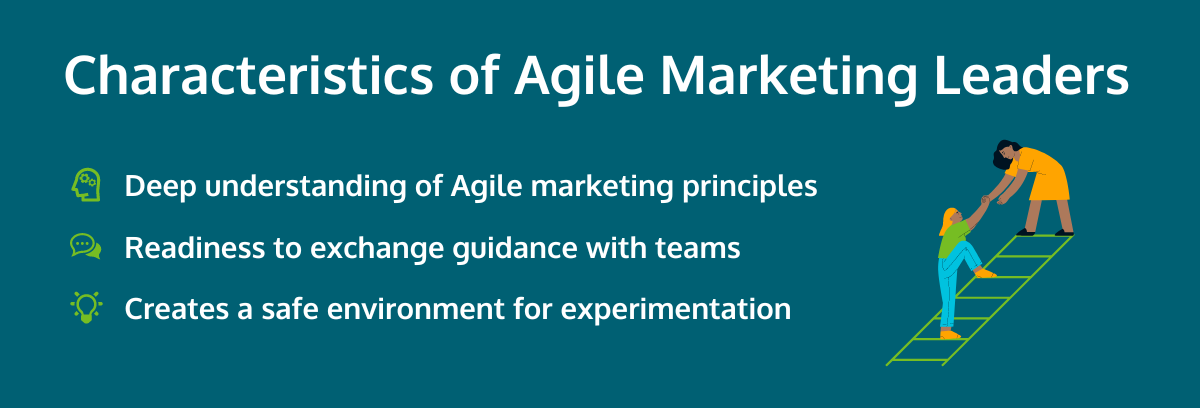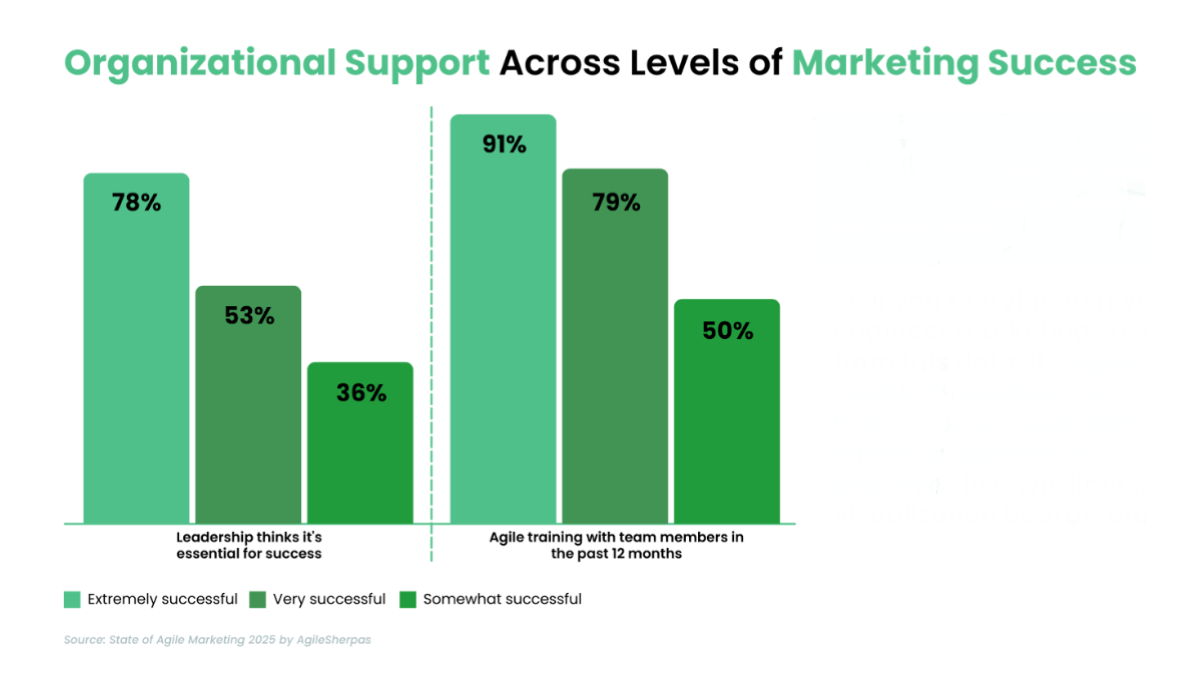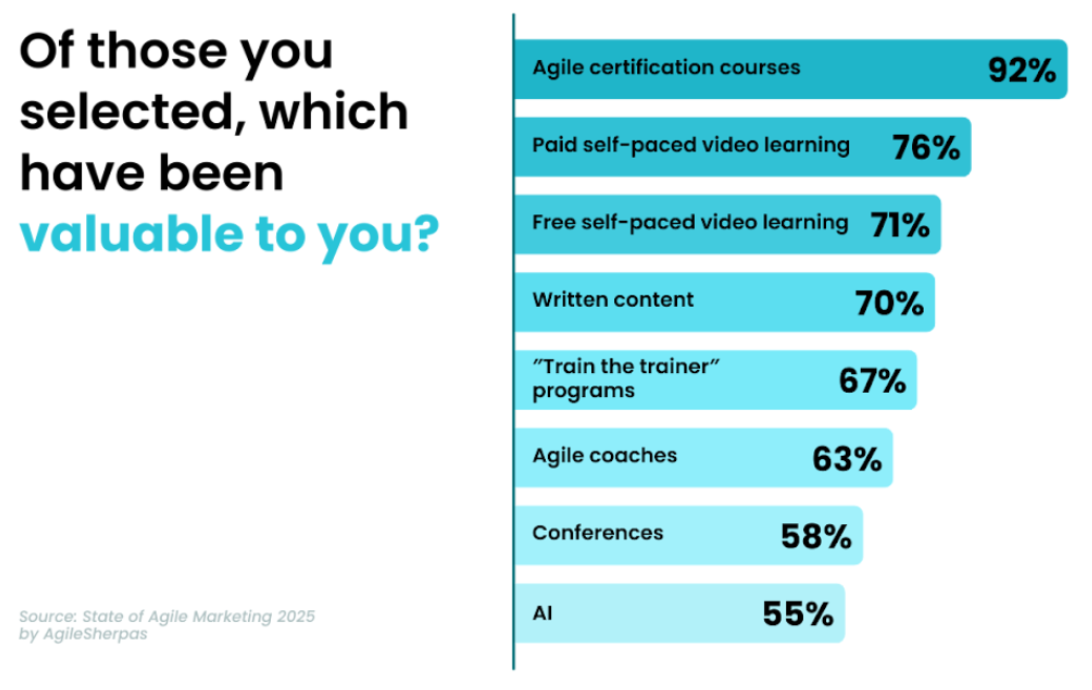-
- marketing agility
- Teams
- Organizations
- Education
- enterprise
- Articles
- Individuals
- Transformation
- Solution
- Leadership
- Getting Started
- business agility
- agile management
- going agile
- Frameworks
- agile mindset
- Agile Marketing Tools
- agile marketing journey
- organizational alignment
- Agile Marketers
- People
- Selection
- (Featured Posts)
- strategy
- agile journey
- Metrics and Data
- Kanban
- Resources
- Why Agile Marketing
- agile project management
- self-managing team
- Meetings
- Scrum
- agile adoption
- scaled agile marketing
- tactics
- scaled agile
- AI
- Agile Meetings
- agile marketing training
- agile takeaways
- Agile Leadership
- agile coach
- enterprise marketing agility
- Scrumban
- state of agile marketing
- team empowerment
- Intermediate
- agile marketing mindset
- agile marketing planning
- agile plan
- Individual
- Team
- Videos
- agile marketing
- kanban board
- Agile Marketing Terms
- agile transformation
- traditional marketing
- FAQ
- agile teams
- Agile Marketing Glossary
- CoE
- Scrumban
- agile
- agile marketer
- agile marketing case study
- agile marketing coaching
- agile marketing leaders
- agile marketing methodologies
- agile marketing metrics
- agile pilot
- agile sales
- agile team
- agile work breakdown
- cycle time
- employee satisfaction
- marketing value stream
- marketing-analytics
- remote teams
- sprints
- throughput
- work breakdown structure
- News
- agile brand
- agile marketing books
- agile marketing pilot
- agile marketing transformation
- agile review process
- agile team charter
- cost of delay
- hybrid framework
- pdca
- remote working
- scrum master
- stable agile teams
- stand ups
- startups
- team charter
- team morale
- user story
- value stream mapping
- visual workflow
Why Agile Marketing Without Agile Leadership Is Doomed to Fail
Eric Halsey
Agile marketing requires effective Agile leadership. Agile leaders model behaviors, empower teams, and generally ensure Agile functions as it should. But to cultivate it, you’ll need to understand Agile principles, build an Agile leadership mindset, and embrace continuous improvement.
Here at AgileSherpas, we’ve seen hundreds of organizations go through various Agile transitions and transformations. Time and time again, Agile leadership has proven itself to be one of the most critical factors for success. That’s why training effective Agile leaders has been one of our main focuses for years.
That said, we’re also passionate Agile marketers ourselves! Even established Agile teams require proactive Agile leaders in order to function effectively.
In other words, any stage of Agile marketing without Agile leadership is not likely to end well. Below, we explain why and what you can do to unlock the power of Agile leadership for your marketing teams.
What Is Agile Leadership?

Years of experience working with and training marketing teams along with 8 years surveying thousands of marketers about their work habits has taught us a few things. The main takeaway is that Agility is driven by effective Agile leadership and that Agility is vital for success in modern marketing.
Fully Agile teams are more than 3x more likely to be successful compared to somewhat Agile teams. A key difference between the two? Effective Agile leadership.
At its core, Agile leadership is simply applying Agile principles towards a leadership role. It sounds simple, but what does that mean in practice?
First and foremost, Agile leadership requires a deep understanding of Agile marketing principles. Without that understanding, leaders are far more likely to drift into “fake Agile,” where they wrongly believe they are following Agile principles. As one might expect, this usually results in teams frustrated that they’re not getting the benefits of Agile despite ostensibly doing what they’re supposed to.
In a more general sense, Agile marketing requires some level of give and take between teams and leadership, with those leaders providing guidance on what the team’s priorities should be, while the team decides how to achieve those priorities. Non-Agile leaders may have a hard time fulfilling this more limited role if they’re used to telling marketing teams how they should achieve broader goals.
Agile leaders also need to be more accepting of failure as a part of a culture that values and creates safe spaces for experimentation and continuous improvement. Overall, good Agile leaders should actively support the Agile development of their marketing teams. But what kind of leadership styles are best for supporting this mission?
What Leadership Styles Are Suitable for an Agile Environment?
The answer is “it depends.” The emphasis Agile marketing places on adaptability translates into how leaders should behave as well. For example, leaders should be democratic in getting input from their teams, but must also set the pace of their work, be a visionary in how they apply Agile principles, etc.
What Agile leaders should not do is take a single style of leadership and focus entirely on it. Adaptability is key!
Why Is Agile Leadership so Important?
The latest State of Agile Marketing Report (SOAM) found that when leaders think Agile is essential for success and provide active support you get far more effective Agile teams. However, we saw the same pattern when we asked marketers about their level of autonomy. In other words, Agile leaders give active support while also knowing when to let their teams do their thing.

That’s not to mention the importance of Agile leadership for transitions and transformations. There, a lack of leadership understanding and support almost guarantees failure. But understanding exactly why requires an even deeper dive into how Agile leadership contributes to better Agile marketing.
Agile Is the Future of Marketing
Let’s start with the biggest and most significant advantage. As discussed, Agile leadership is critical for successful Agile marketing. And considering the rapidly growing popularity and importance of Agile in marketing, that leadership is also becoming increasingly vital.
The aforementioned State of Agile Marketing Report (SOAM) found that fully Agile marketers were far more likely to be “extremely successful” and far better able to do things like fully implement AI in their processes. These teams were more productive, less stressed, and better able to deliver clear ROI to their organizations.
With the pace of change in business only increasing, the efficiency, flexibility, and innovation that Agile marketing brings is only set to become more crucial. To make a long story short, if your marketing is going to remain competitive over the long term, adopting Agile is essential.
Agile Transitions Take Time and Resources
We frequently get asked how long an Agile marketing transformation typically takes, and, in our experience, 12-18 months is typical. Even if the transition doesn’t take too long, that’s a lot of time for leadership to lose interest and even pull the plug, leaving marketing teams stuck mid-transition and unable to access the full benefits of Agile.
These transitions and transformations also require resources for training and coaching. A transition is unlikely to succeed without that kind of education and support. Bottom line: when Agile transitions and transformations are happening, support from the top is absolutely essential.
Non-Agile Leaders Can Create a Disconnect

From our definition and discussion of Agile leadership above, it should be clear that not having it can easily create a dangerous disconnect between marketing teams and their leaders. When leaders don’t understand how their teams operate or why they function the way they do, the door is open for conflict.
For example, a non-Agile leader may expect their team to handle lots of unplanned work. However, Agile marketing teams are designed to push back against unplanned work to ensure they can remain focused on delivering value through work in progress. A non-Agile leader may also expect to have more direct control over how exactly their teams accomplish goals.
Those are just a few examples, but the stark differences between traditional and Agile leadership create myriad opportunities for conflict.
Agile Leadership Is Necessary to Unlock Key Agile Benefits
Avoiding disconnects and conflict is great, but, as noted, actually unlocking the full benefits of Agile marketing also requires the right leadership.
For example, our annual State of Agile Marketing Reports have long found that Agile teams much prefer working with other Agile teams (over non-Agile teams). They simply share a similar mindset and set of practices around their work. Good Agile leadership is one of the best ways to advocate for a greater use of Agile throughout the organization, enabling more teams to unlock its benefits and collaborate more effectively.
Agile methods also offer great ways to improve alignment between various levels of an organization. Systems like Portfolio Kanban offer a fantastic way to directly tie marketing activities to broader organizational goals. But systems like this require leadership involvement that may prove difficult if they are unfamiliar with the Agile principles behind them.
Agile Leaders Are Essential for Building the Right Culture
While Agile ways of working tend to get more attention, culture is the true foundation for Agile success. We’ve seen this time and time again at AgileSherpas. Teams will begin working in sprints and using a Kanban board but wonder why they’re not unlocking all the benefits they expected.
For example, when the 8th annual State of Agile Marketing Report found that fully Agile teams were far better at implementing AI, what was behind that success? It was culture. Cultures that used their autonomy to experiment, iterate, and really figure out how to use AI to move the needle where it matters.
But without Agile leadership, those teams can’t get that autonomy. Instead, AI comes as a mandate with a side of micromanagement, hampering the ability of marketers to really figure out the new technology. But Agile leadership is also about leading by example. Here at AgileSherpas, our own AI implementation started with our CEO discussing how she was using it and encouraging the rest of the organization to follow in her footsteps and share their learnings.
Foundational Principles of Agile Leadership
Now that you understand what Agile leadership is and why it’s important, what principles should you focus on to be an effective Agile leader? Here are a few key things to pay attention to.
Servant Leadership
Perhaps the single most important foundation in Agile leadership is the concept of the servant leader. It boils down to this: leaders exist to serve their team members, not the other way around. Leaders should work to set their egos aside and focus on providing the resources, input, training, etc. their teams need.
Servant leaders also lead by example. Looking at the AI example, instead of simply telling team members to figure out how to use AI tools to improve performance, Agile leaders would do this themselves. It’s far easier to build a real and robust Agile culture when you’re leading by example, showing team members how to think, behave, tackle problems, etc.
Adaptability
Perhaps the only true constant in modern marketing is change. A key reason Agile marketing helps marketers achieve so much in this environment is its adaptability. It’s designed around continuous improvement, iterating, and experimenting to figure out what works. But that process relies heavily on effective Agile leadership.
For example, if your team tests an idea and figures out it doesn’t add any value, how should you as a leader respond? You could admonish them for wasting time on a test that didn’t find anything useful, or praise them for experimenting and noting how important it is to know what doesn’t work. How a leader behaves in such situations sets the tone and helps create an adaptable culture.
Put another way, for teams to be adaptable they need leaders to lead by example.
Customer Centricity
Another foundational way Agile teams function is by focusing on their customers and stakeholders. But while it’s easy to say that, actually creating a culture where such considerations are second nature is another matter. Agile leadership needs to come in and lead the way, supporting their teams in this focus and leading by example.
For example, if a team is testing a new AI tool, their leader may remind them to consider the compliance team as a stakeholder. Or, if a team is developing a new campaign, an Agile leader may ask how the campaign’s success will affect customers. Like with everything on this list, leading by example is key, showing teams how they can be customer-centric instead of just telling them to be.
Collaboration
A huge element of the value Agile leadership brings to marketing is through breaking down silos. Encouraging the sharing of information and general collaboration makes teams more effective and efficient. Leaders are best positioned to encourage these behaviors through a combination of advocating for changes to rules that may prohibit such collaboration as well as leading by example to build a collaborative culture.
Agile Leadership vs Traditional Leadership
While looking at the principles of Agile leadership is useful, you can really get a sense of it when you compare it directly to traditional leadership. In a broad sense, traditional marketing leadership is rigid, hierarchical, top-down, and focused on output. Leaders tell their teams what they should do to achieve organizational goals.
This method of leadership works great when you’re managing a widget factory in an economy where major changes come every few years or even decades. The problem comes when you apply this style to modern marketing, where adaptability and flexibility are essential in the face of rapid change.
Agile leadership was specifically designed for this modern reality. Here, leaders run more decentralized teams, where their role is to serve and support rather than command. Those teams are also cross-functional, meaning less time is wasted reaching out across internal siloes to access talent needed to get work done.
While it’s true that if you airdropped an Agile leader into a 19th century factory they probably wouldn’t be as effective, their modern style of Agile leadership excels in today’s day and age.
Steps for Implementing Agile Leadership
If you want to cultivate Agile leadership in yourself or leaders in your organization, here are some concrete steps you can take.
1. Identify Your Goals
Investing in Agile leadership is best approached in an Agile way. That means beginning with an understanding of your goals. If you simply want to “be a better leader” you’re going to struggle to understand where to invest and how to quantify your progress.
For example, do you want your teams to have more autonomy so you can spend less time micromanaging? Do you want to increase agility on your teams through leading by example? Concrete goals like this help make the Agile leadership implementation process easier, more focused, and more effective.
2. Begin with Mindset
One of the most common mistakes teams make when implementing any kind of Agility is prioritizing practices over mindset. Agile leadership is first and foremost about your mindset. So before you dive headfirst into working in sprints or using a visualization board, you need to invest in some combination of education, training, and coaching. Fortunately, we have a breakdown of how to do this below.
3. Embrace Continuous Improvement
Another overarching thing to appreciate about implementing Agile leadership is that it’s never “finished.” Agile itself isn’t static and so the people using Agile ways of working can’t be static either. Instead of, for example, going to a three-week Agile training course and deciding that once it’s completed you will be an Agile leader is the wrong approach.
Here it can be useful to invest in long-term resources like coaching or an Agile leadership community. After all, Agile leaders need to model the behavior they want to see in team members and continuous improvement is about as fundamentally Agile as you can get.
Essential Skills & Traits for Agile Leaders
To be a successful Agile leader, you need work on certain traits and to be proficient with the following set of foundational skills:
Emotional Intelligence (EQ)
This may sound vague, but self-awareness, empathy, and the ability to create psychological safety in teams are essential for effective Agile leadership. The flexibility and change Agile embraces can be challenging for people to embrace. Excellent EQ helps leaders support their team members in that change.
Adaptability
Agile leaders need to feel comfortable (even excited) about testing, experimenting, and generally making changes to improve how teams function. If this isn’t going to feel like “going through the motions” leaders need to embrace this skill.
Humility
A key component of the servant leadership that Agile leadership is built on is humility. Agile leaders can’t be infallible, they need to model self-critical and understanding behavior for their teams. It’s important that everyone feels comfortable calling out when things aren’t working and proposing changes, even if that means the leader is wrong.
Mentoring
In the process of bringing agility to a team (or simply onboarding a new hire onto an existing Agile team), leaders often need to be mentors. This means encouraging team members to learn, grow, experiment, speak up, etc. Instead of stepping in to finish work, Agile leadership is about removing blockers and enabling those team members to improve themselves. Mentoring skills aid in all of these essential tasks.
Prioritization
One of the key ways Agile teams outperform their traditional counterparts is by doing the right work at the right time. That’s why prioritization is so important. While exact practices vary, often the Agile leader will create and maintain a prioritized backlog of work that the team will work from.
Customer Centricity
A deep part of Agile culture is a focus on customers and related stakeholders. Agile leadership should be built on this focus, with leaders reflexively asking how decisions impact stakeholders. Again, leaders need to model this behavior to build the same habit on their teams.
Growth Mindset
Agile leaders should always be looking for new ways to change and improve. They should never be satisfied with how things are, instead they always need to be thinking about what can be better. Whether that’s making a simple change in a process or something as profound as embracing AI in marketing, leaders need a growth mindset to drive these behaviors.
How to Build Agile Leadership Skills
Building all the Agile leadership skills listed above isn’t easy, but fortunately, our latest State of Agile Marketing Report surveyed hundreds of marketers around the world to understand what types of Agile education were the most effective.


That said, all of these types of learning can be useful depending on your needs. Below, we’ll explain when they tend to be the most important.
The 70-20-10 Rule
Before looking at the Agile education types below, you need to understand an important rule. To maximize the effectiveness of Agile leadership education it should contain around 10% structured learning, 20% learning from others through things like communities, networks, or coaching, and 70% applying all these learnings.
The point is to avoid simply taking a course and thinking you’re done. Ideally, your path to Agile leadership will include all of the examples listed below.
Self-Paced Learning
Whether free or paid, the main advantage of self-paced learning is flexibility. Even if you only have 15 minutes a day, it’s relatively easy to use these tools to educate yourself about basic Agile principles and practices. That’s why this type of learning is a great introduction to Agile leadership.
Certification Courses
When you’re ready to get serious about Agile leadership, certification courses are a great way to build on the fundamentals you might gather in self-paced learning. Here, you learn in a small group with an experienced instructor who can answer questions and walk you through more interactive learning content.
This more interactive, example-driven, and experiential learning is useful for driving home Agile leadership skills and enabling you to understand your own learning needs better. Plus at the end you get a certification you can use to advance your career and prove your Agile leadership skills.
Coaching
Often the next step in Agile education is coaching. This might be intensive coaching or just the occasional call to check in. In either case, an Agile coach can help you overcome a major challenge in Agile leadership: translating theory into practice.
For example, you might try to create cross-functional teams but find you can’t justify assigning a full-time designer to each team. An Agile coach can use their experience to help you overcome that challenge. In many cases, the personal experience a coach brings just isn’t available in articles or online learning.
Communities
Whether you’re just getting into Agile leadership or are a seasoned Agile leader, communities are a great way to share experiences, ask questions, and hone your skills. Often these communities are quite affordable or even free to join, so they’re an affordable option for continuously improving and honing your Agile leadership skills in the long run.
Agile Leadership FAQs
What Is Agile Leadership?
Agile leadership is built on supporting teams instead of commanding them. Such leaders encourage collaboration, experimentation, and look for resources and training their team members need to be more effective. They also apply Agile principles to their work.
What Are the Three Traits of an Agile Leader?
Boiling Agile leadership down to three traits means focusing on an adaptive mindset, servant leadership, and collaborative communication. These three traits enable Agile leaders to respond to feedback quickly, learning and iterating how they operate while empowering their teams with greater autonomy and resources.
What Is an Agile Leadership Style?
An Agile leadership style is one built around serving and supporting those below you while remaining flexible and adaptive. Such leaders are constantly looking for ways to iterate and improve their team processes as well as new ways to support their team members to accomplish more.
How to Unlock Agile Leadership
Interested in becoming a better Agile marketing leader? We’ve put together a tailored course to help you do just that. Our Agile Marketing Leadership (ICP-LEA) Course can be taken on your own or in a private cohort. It can also be combined with private training to help you apply its lessons toward your unique challenges. It has everything you need to lead your Agile marketing teams to success!
Topics discussed
Improve your Marketing Ops every week
Subscribe to our blog to get insights sent directly to your inbox.


